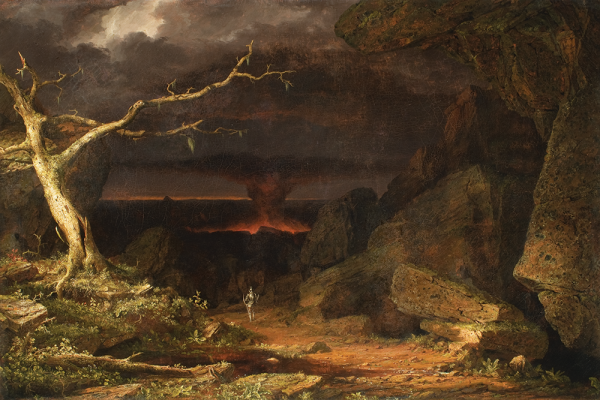THE EARTH SEEMS ablaze. Each year, flames appear more savage, more far-ranging, and more inescapable. The prophecy of Ezekiel is coming to pass: “They shall go out from one fire, and another fire shall devour them” (15:7). The planet is, as some see it, careening toward a secular apocalypse.
To be caught between two fires is an old notion. But a lot has changed since Ezekiel’s warning. Today, we do not have to cope with two fires but with three. The first is the fire that has burned as long as terrestrial vegetation has existed. The second is the fire that humans tamed from the first. The third involves burning fossil fuels. The three fires together are shaping our world, which makes humanity uniquely suited to serve as a steward, for we are Earth’s fire creature, the only one with the systematic capacity to start and stop flame.
WESTERN CIVILIZATION HAS a long heritage of fire myth, lore, religion, and science. Early Indo-Europeans seem to have worshiped a fire deity. Of the 12 ancient Olympians, two were gods of fire — Vesta for the hearth, Vulcan for the forge. Ritual fire became a fundamental practice of Zoroastrians, among the first of the monotheisms. New colonies or dislocated peoples would take fire from their mother city to literally “rekindle” its offspring. The hearth fire, most famously in Rome, stood for both family and state. Pyromancy, the practice of divining meaning in flames, is an old practice.
Read the Full Article

